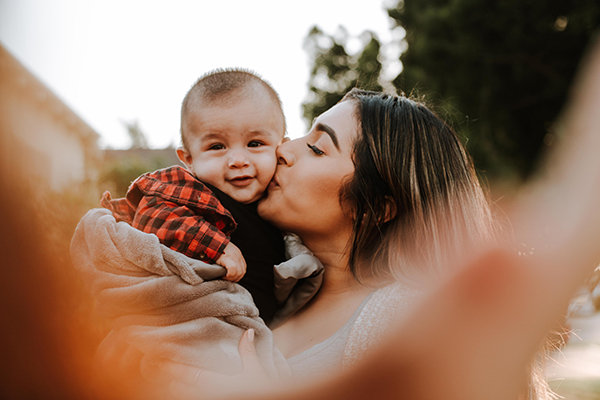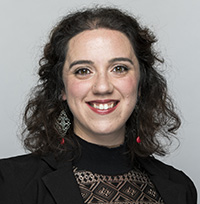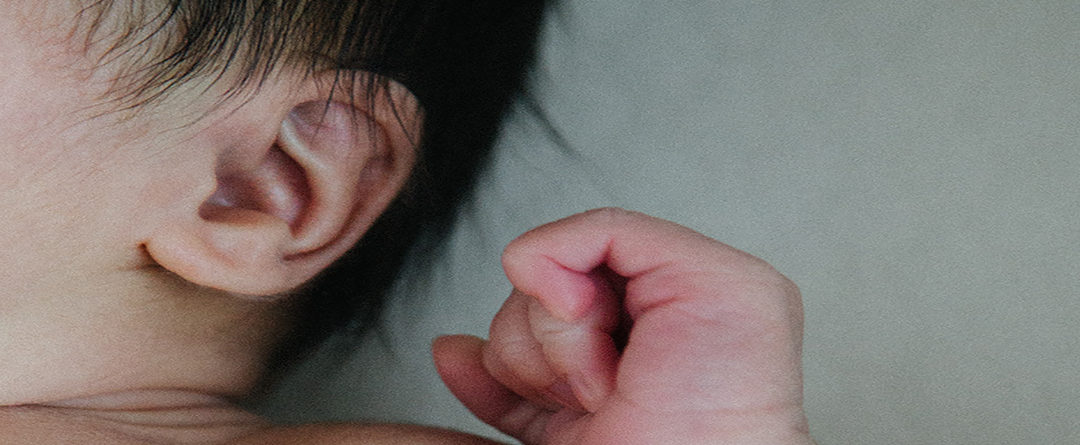by Elyssa Salinas
Six years ago, I wrote about mother figures. I was thinking about the women who had been mother figures in my life, but I had not yet felt my own womb expand.
Now I am a mother of two. The c-section scars still feel new to my body as my children learn to walk and talk. I was given a mug with a mama bear on it before my daughter was born, which I thought was a cute image. But I did not put much stock into the notion of a bear as an image for motherhood. Then when I became a mother, I found a fierceness that I did not expect. It almost felt as though the world came into focus in a new way, and protecting this child was the most crucial part of my life.
 When I think about this fierce protectiveness, I think of the women at the beginning of Exodus who defied the power surrounding them, as they became mother figures for Moses. I first think of Shiphrah and Puah, the midwives who defied the Pharaoh’s orders and kept baby boys alive. They lied to Pharaoh to protect children that they helped bring into this world, “. . . the midwives feared God; they did not do as the king of Egypt commanded them, but they let the boys live” (Exodus 1:17). Some protect children before they are born; the midwives, doulas, doctors, nurses, and all those who give their great wisdom and help guide children into the world.
When I think about this fierce protectiveness, I think of the women at the beginning of Exodus who defied the power surrounding them, as they became mother figures for Moses. I first think of Shiphrah and Puah, the midwives who defied the Pharaoh’s orders and kept baby boys alive. They lied to Pharaoh to protect children that they helped bring into this world, “. . . the midwives feared God; they did not do as the king of Egypt commanded them, but they let the boys live” (Exodus 1:17). Some protect children before they are born; the midwives, doulas, doctors, nurses, and all those who give their great wisdom and help guide children into the world.
I think about Jochebed, the woman who gave birth to Moses. She hid her son for three months before placing him into the river, hoping God would protect her child. “When she could hide him no longer, she got a papyrus basket for him, and plastered it with bitumen and pitch; she put the child in it and placed it among the reeds on the bank of the river” (Exodus 2:3). Some give birth to us, the mothers who held us in their wombs and protect us with their own skin. Sometimes we grow up with them, and sometimes they give us our best chance in the arms of other mother figures.
I think about Miriam, who watched over her baby brother and spoke up when she saw a way for her brother to survive. “Then his sister said to Pharaoh’s daughter, ‘Shall I go and get you a nurse from the Hebrew women to nurse the child for you?’” (Exodus 2:7). Sometimes a sister becomes another mother figure and watches and speaks up when we are in trouble.
I think of the Pharaoh’s daughter, who knew that this child was supposed to die but took him in her arms and raised him as her own. “The daughter of Pharaoh came down to bathe at the river while her attendants walked beside the river. She saw the basket among the reeds and sent her maid to bring it. When she opened it, she saw the child. He was crying, and she took pity on him. ‘This must be one of the Hebrews’ children,’ she said” (Exodus 2:5-6). A mother figure can see us as a child in need and embraces us as one of her own.
My experience of motherhood has been one where I was pregnant and gave birth to my children. But there are so many other ways to be a mother figure. The women who surrounded Moses were mother figures who protected him, gave birth to him, and raised him. Being mother figures to this one child transformed their lives.
A new figure of motherhood
Both of my children have transformed my life beyond what I can express. When we embrace a new life, we are changed. My life changed, my work changed, and my body changed. I have a tattoo of the Venus of Willendorf, an ancient figure of fertility, femininity, and motherhood on my arm. I loved her regal stance and full embrace of her voluptuous body. Now my two-year-old daughter points to her and says, “that’s you, Mommy.” My body has transformed to look like this statue, and it has transformed into a new figure of motherhood.
Maybe we all transform when we become mothers. Whether it is our bodies or our hearts, we are transformed. Maybe we transform into fierce protectors, like Shiphrah and Puah, making sure patriarch power doesn’t stop our children from living. Perhaps we are like Jochebed, giving our children their best chance in the world.
Maybe we are like Miriam, watchers who speak up when we see the opportunity for a child to survive. Perhaps we embrace children who come into our lives, like the Pharaoh’s daughter, whether we gave birth to them or not.
What if being a mother figure transforms us as a community? All these women helped deliver Moses to his calling from God. There is not just one woman who saved him. There was a community. We are a community, transformed by those who were mother figures to us, and now we pass on that sacred wisdom to our children.
Discussion questions:
1. What does it mean to be a “mother figure”? Who were mother figures in your life?
2. Who are biblical women who you see as mother figures? What do they say to you about motherhood?
3. What communities have transformed you?
Closing prayer:
Mothering God, You are our fierce protector and hold us in the womb of your love. Thank you for giving us mother figures who transformed us throughout our lives. Guide our hearts, hands, and voices with your wisdom this day and every day. In your name, we pray, Amen.
 Elyssa is a doctoral student in theology at Garrett-Evangelical Theological Seminary. She focuses on the theology of the body and sex. Alongside her studies, she is a poet and hobby baker. As a writer, Elyssa’s poetry and blogging can be found at Café (boldcafe.org), The Mudroom, Naked and Unashamed, and We Talk, We Listen. She lives in Chicago with her husband, two children, and two cats.
Elyssa is a doctoral student in theology at Garrett-Evangelical Theological Seminary. She focuses on the theology of the body and sex. Alongside her studies, she is a poet and hobby baker. As a writer, Elyssa’s poetry and blogging can be found at Café (boldcafe.org), The Mudroom, Naked and Unashamed, and We Talk, We Listen. She lives in Chicago with her husband, two children, and two cats.


Elyssa, I always enjoy your articles. I look forward to meeting you again some day. You are so blessed and your inspiration uplifts I my soul. May God continually open the doors of opportunity for you on your faith journey.
Your Sister in Christ, Kathy
Great message for me to read two days before Mother’s Day. And, although I’m not Catholic it does make me think of Mary and May being the month of Mary……